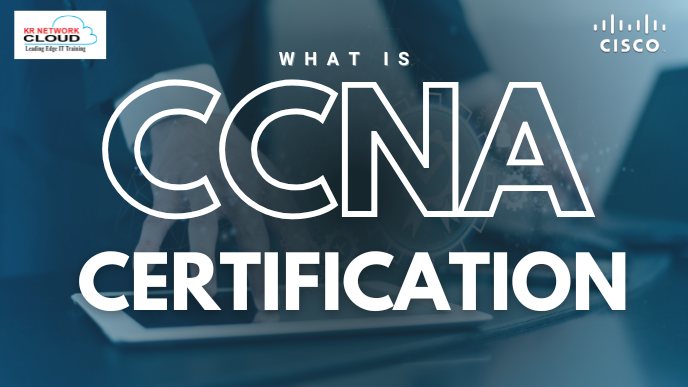Understanding Ansible Automation in Linux Administration

- KR NETWORK CLOUD
- July 10, 2025
The Need for Automation in Linux Administration
Managing Linux systems manually is like one misstep can cause chaos. System administrators often manage dozens of servers, ensuring each is updated, configured, and secure. This process is not only tedious but also error prone. For example, skipping a step in a checklist or mistyping a command can lead to misconfigured services or vulnerabilities. Over time, servers that should be identical can develop differences, known as configuration drift, which complicates troubleshooting and maintenance.
Ansible automation addresses these challenges by allowing administrators to define the desired state of their systems and enforce it consistently. By automating repetitive tasks, like updating packages, configuring services, or deploying application administrators can save time and reduce errors.
Ansible Automation also enables Infrastructure as Code (IaC), where infrastructure is defined in machine-readable files that can be version-controlled, tested, and reused. This practice ensures every change is documented, reproducible, and collaborative, bridging the gap between development and operations teams. By adopting automation, organizations can deploy updates faster, maintain consistency, and focus on innovation rather than routine maintenance.
What is Ansible?
Ansible is an open-source automation platform designed to simplify the management of IT infrastructure. At its core, Ansible uses a simple, human-readable language—YAML—to define automation tasks in files called playbooks. Unlike other tools that might require complex scripting or proprietary languages, Ansible’s straightforward syntax makes it accessible even to those without a deep programming background.
What sets Ansible apart is its agentless architecture. This means you don’t need to install any special software on the servers you’re managing. Instead, Ansible connects to these servers (called managed hosts) using standard protocols like SSH or WinRM, making it quick to set up and inherently more secure. It’s this simplicity that has made Ansible a favorite among system administrators and DevOps teams alike.
Why Automate with Ansible?
The case for automation is clear: manual system administration is error-prone, time-consuming, and often leads to inconsistencies across servers. Automation with Ansible addresses these issues head-on:
Consistency: By defining your infrastructure as code, Ansible ensures every server is configured identically, eliminating the “drift” that can occur with manual management.
Efficiency: Repetitive tasks like deploying applications or updating configurations can be automated, freeing up your time for more critical work.
Scalability: Managing hundreds or even thousands of servers becomes manageable with Ansible’s ability to scale effortlessly.
Version Control: Since Ansible playbooks are plain text files, they can be stored in version control systems like Git, allowing you to track changes and collaborate effectively.
Perhaps most importantly, Ansible embraces the concept of Infrastructure as Code (IaC). This means you can define your entire IT infrastructure in a machine-readable format, making it easier to reproduce environments and ensure everything is always in the desired state.
Key Features of Ansible
Ansible’s popularity stems from its unique blend of simplicity, power, and versatility. Here are some of its standout features that make it ideal for Ansible automation:
- Simplicity: Ansible playbooks are written in YAML, a straightforward format that’s easy to read and modify, even for beginners. No advanced coding skills are needed to get started.
- Power: Ansible can handle diverse tasks, from basic configuration management to complex orchestration across multiple systems and environments.
- Agentless Architecture: By using existing protocols like SSH and WinRM, Ansible eliminates the need for additional software on managed hosts, enhancing security and efficiency.
- Extensibility: Ansible comes with hundreds of built-in modules, and users can create custom ones to meet specific needs, making it highly adaptable.
- Idempotence: Ansible tasks are designed to be idempotent, meaning they can be run multiple times without causing unintended changes. If a system is already in the desired state, Ansible skips unnecessary actions.
- Cross-Platform Support: Ansible works seamlessly with Linux, Windows, network devices (like routers), cloud platforms (e.g., AWS, Azure), and containers, making it a versatile tool for diverse environments.
These features make Ansible an accessible yet powerful tool for automating Linux administration tasks, enabling IT teams to work smarter, not harder.
Understanding Ansible’s Architecture
To fully grasp how Ansible Linux automation works, it’s essential to understand its architecture. Ansible operates through two primary components:
- Control Node: This is the machine where Ansible is installed and playbooks are executed. It could be an administrator’s laptop, a shared server, or a dedicated instance like Red Hat Ansible Tower.
- Managed Hosts: These are the servers, devices, or cloud instances that Ansible manages. They are listed in an inventory file, which can be static (a simple text file) or dynamic (generated from external sources like cloud providers).
Ansible uses playbooks to define automation tasks. A playbook, written in YAML, contains one or more plays, each specifying a set of tasks to be executed on a group of managed hosts. Each task calls a module—a small, purpose-built program that performs a specific action, such as installing software, managing files, or configuring services. Modules are executed on the managed hosts and ensure the system reaches the desired state.
This playbook targets hosts in the “webservers” group, installs Apache using the apt module, and ensures it’s running and enabled at boot. Ansible’s tasks are idempotent, meaning they can be run multiple times without causing issues if the system is already in the desired state.
Ansible’s agentless design means it connects to managed hosts via SSH or WinRM, requiring no additional software or custom network ports. For larger teams, Red Hat Ansible Tower (currently known as Advanced Ansible) provides a web-based interface and API to manage Ansible automation at scale, offering features like access control, job logging, and inventory management.
| Component | Description | Role in Ansible |
|---|---|---|
| Control Node | Machine where Ansible is installed | Executes playbooks and manages automation |
| Managed Hosts | Servers or devices managed by Ansible | Receive and execute tasks defined in playbooks |
| Inventory | List of managed hosts, static or dynamic | Organizes hosts into groups for easier management |
| Playbook | YAML file containing automation tasks | Defines the desired state and tasks to achieve it |
| Module | Small program for specific tasks | Performs actions like installing software or managing files |
Use Cases of Ansible
Ansible’s versatility makes it a powerful tool for a wide range of Linux administration tasks. Here are some common use cases where Ansible Linux automation shines:
- Configuration Management: Ensure all systems have consistent configurations by managing files, packages, and services across multiple hosts. For example, Ansible can standardize SSH settings across a fleet of servers.
- Application Deployment: Deploy applications consistently across development, testing, and production environments, reducing errors and ensuring reliability.
- Provisioning: Automate the setup of new servers or virtual machines with predefined configurations, streamlining onboarding processes.
- Continuous Delivery: Integrate Ansible into CI/CD pipelines to automate testing, deployment, and rollback, enabling faster and more reliable software releases.
- Security and Compliance: Enforce security policies and compliance standards across systems, such as ensuring firewalls are configured or specific packages are installed.
- Orchestration: Manage complex workflows involving multiple systems, such as rolling out updates or scaling applications across cloud environments.
These use cases demonstrate Ansible’s ability to simplify and unify various aspects of IT automation, making it a cornerstone of modern DevOps practices.
Red Hat Certified Engineer Exam Details (EX294)
| Certificate Provider | Red Hat |
| Exam Code | EX294 |
| Exam Name | Red Hat Certified Engineer (RHCE) exam |
| Exam Type | Practical Lab Based |
| Exam Format | Online Proctored |
| Exam Location | Remote basis or Official Testing center (e.g KR Network Cloud) |
| Number of Questions | Around 20 |
| Exam Duration | 240 Minutes / 4 Hours |
| Maximum Score | 300 |
| Minimum Passing Score | 210 |
| Certification Validity | 3 Years |
| Exam Attempt Validity | 365 Days after booking your exam (May vary with current policy) |
| Exam Price | 20K+18% GST (May vary with Region & Current Pricing) |
Conclusion
Ansible for Linux administration transforms how you manage Linux systems, automating repetitive tasks, ensuring consistency, and reducing errors. Its simple, agentless design and powerful features make it a must-have for IT teams.
Whether you’re handling a few servers or a global infrastructure, Ansible streamlines operations, letting you focus on innovation. The RH294 course equips you with hands-on skills to master this tool, unlocking the full potential of automation in your Linux environment.
FAQs
What is Ansible automation?
Ansible automation is the process of using Ansible, an open-source platform, to manage IT infrastructure through simple, human-readable YAML playbooks. It’s ideal for tasks like configuration management, application deployment, and orchestration.How does Ansible automation benefit Linux administration?
Ansible automation ensures consistent configurations, reduces human error, and saves time by automating repetitive tasks. Its agentless architecture and idempotency make it a reliable choice for managing Linux servers.Is Ansible automation suitable for beginners?
Yes, Ansible’s simple YAML syntax and extensive documentation make it accessible to beginners. No advanced programming skills are required, though familiarity with Linux basics is helpful.What is idempotency in Ansible automation?
Idempotency means running an Ansible playbook multiple times has the same effect as running it once. This ensures your infrastructure reaches the desired state without unnecessary changes.Can Ansible automation be used for Windows servers?
Absolutely. Ansible supports Windows through WinRM and offers modules tailored for Windows tasks, making it a cross-platform automation solution.How does Ansible automation handle sensitive data?
Ansible uses tools like Vault to encrypt and manage sensitive data, ensuring secure handling of credentials and other confidential information during automation.What are Ansible playbooks in automation?
Ansible playbooks are YAML files that define automation tasks. They contain plays, which are sequences of tasks executed on managed hosts to achieve a desired state.How can Ansible automation improve DevOps practices?
Ansible automation supports DevOps by enabling Infrastructure as Code, facilitating CI/CD pipelines, and ensuring consistent environments from development to production.Is Ansible automation scalable for large environments?
Yes, Ansible is designed for scalability. Tools like Red Hat Ansible Tower enhance its capabilities for managing large-scale automation across thousands of servers.What is the role of modules in Ansible automation?
Modules are the building blocks of Ansible automation. Each module performs a specific task, such as managing files or installing software, and is designed to be idempotent.Can Ansible automation be integrated with other tools?
Yes, Ansible integrates seamlessly with tools like Jenkins for CI/CD, Red Hat Satellite for configuration management, and various cloud platforms for provisioning.What is Red Hat Ansible Tower, and how does it relate to Ansible automation?
Red Hat Ansible Tower is an enterprise tool that enhances Ansible automation by providing centralized management, role-based access control, and job scheduling for large-scale deployments.







